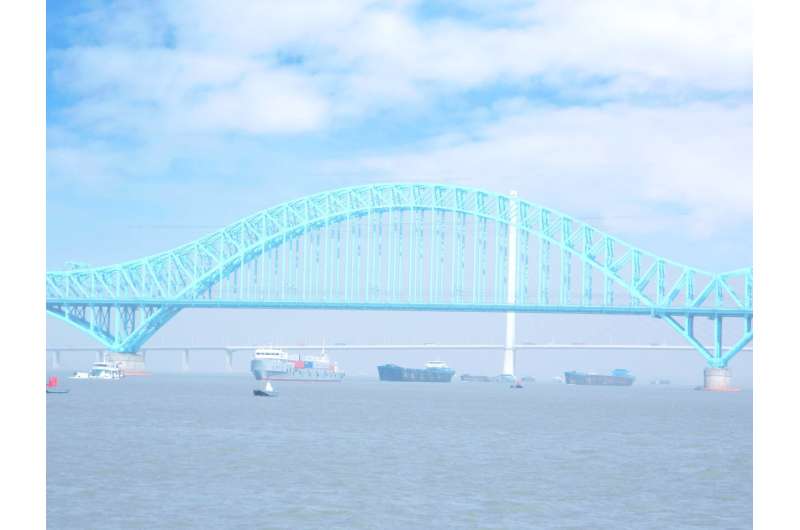Underwater noise pollution in Yangtze River threatens porpoises and fish

Although the Yangtze River has a high biodiversity and is a key river for global biodiversity conservation, little attention has been paid to underwater noise pollution in the world's busiest inland river in terms of shipping.
In a study published in Ecotoxicology and Environmental Safety, a research group led by Prof. Wang Kexiong from the Institute of Hydrobiology (IHB) of the Chinese Academy of Sciences demonstrated that the riverside underwater noise pollution threatened porpoises and fish along the middle and lower reaches of the Yangtze River.
Using passive acoustic monitoring, the researchers investigated underwater noise pollution levels at 25 riverside locations along the middle and lower reaches of the Yangtze River. They found that about 88 percent and 40 percent of the sampled sites had noise levels above the underwater acoustic threshold, which resulted in cetacean responsiveness and temporary threshold shifts, respectively.
Additionally, they compared the one octave-band power spectrum of the noise with fish audiograms and noted that silver carp, bighead carp, goldfish and common carp, which all have physostomous swim bladders and Weberian ossicles, are likely to be significantly affected by noise pollution in the Yangtze River, whereas fish with physoclistous swim bladders and without Weberian ossicles, such as lake sturgeon and paddlefish, are less likely to be affected.
The researchers compared the noise levels with those of 2012 and observed a reduction of approximately 10 and 20 decibels in the middle and lower reaches of the Yangtze River, respectively. This led them to conclude that green shipping, including green shipping lanes, ports, ships and transportation organizations that are being constructed in the Yangtze River Economic Belt possibly contributed to the reduction of underwater noise pollution in the riverside. For example, the increased water depth of the navigation channels in the Yangtze River may facilitate sound propagation loss.
As the underwater noise pollution in the Yangtze River is still threatening porpoises and fish, follow-up noise mitigation endeavors are needed to reduce the noise level in the river. The researchers recommended extending ship speed restrictions and determining the optimal navigation speed in ecologically important areas.
This study increases the concern regarding the problems of underwater noise pollution and animal conservation and their corresponding solutions and may help further alleviate the noise pollution in the Yangtze River when administrative departments issue measures. It can facilitate the conservation of local aquatic animals, especially endangered ones.
More information: Zhi-Tao Wang et al, Riverside underwater noise pollution threaten porpoises and fish along the middle and lower reaches of the Yangtze River, China, Ecotoxicology and Environmental Safety (2021). DOI: 10.1016/j.ecoenv.2021.112860
Provided by Chinese Academy of Sciences


















